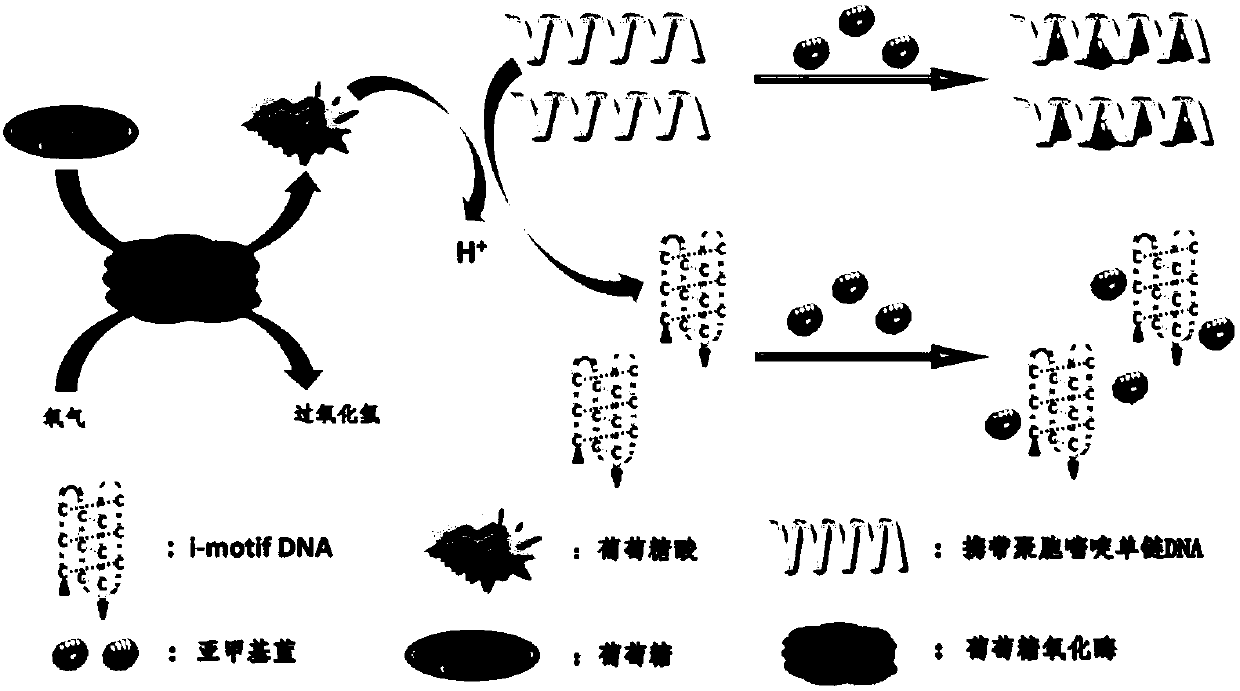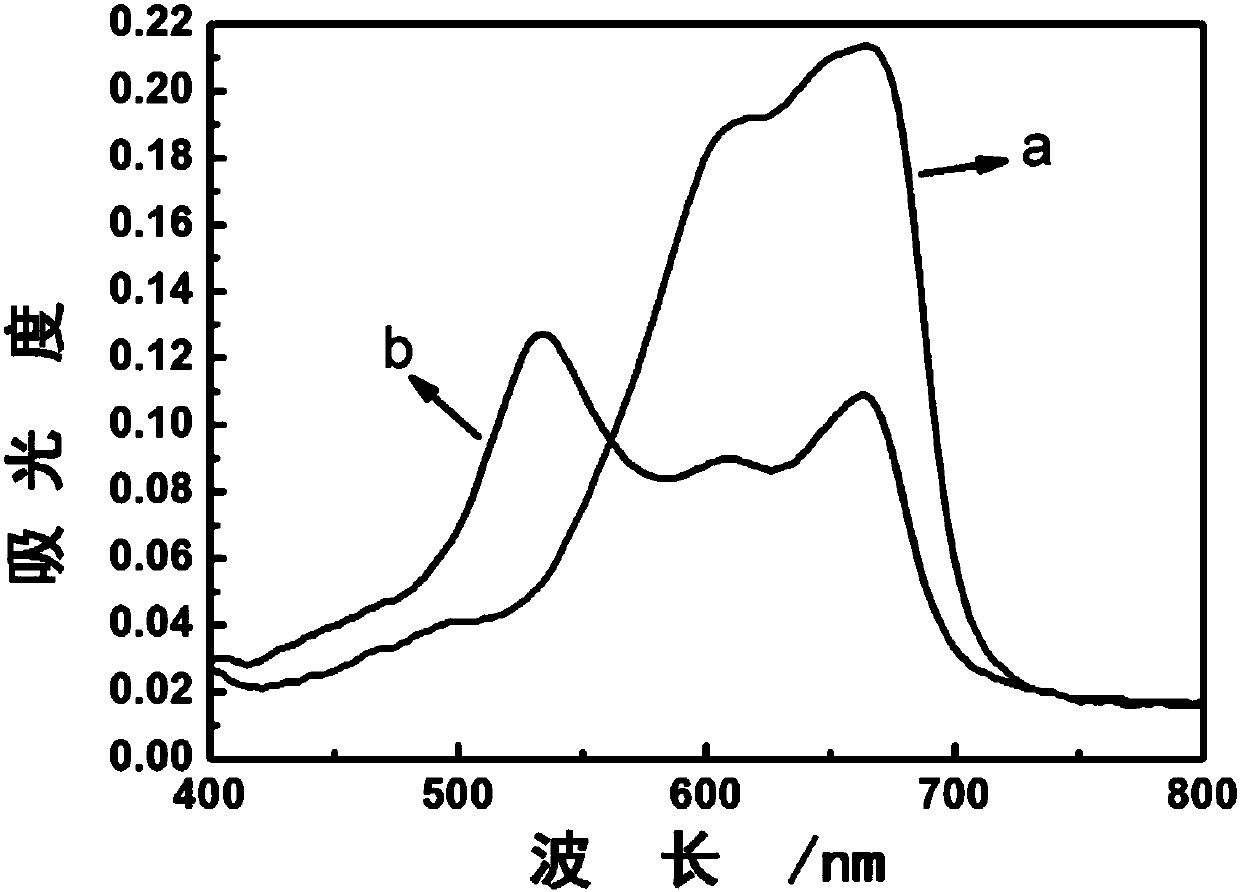Biological colorimetric sensor, preparation method and application in glucose detection
A colorimetric sensor, glucose technology, applied in the measurement of color/spectral characteristics, analysis by making materials undergo chemical reactions, material analysis by observing the impact on chemical indicators, etc., can solve the limitations of practical applicability, lengthy detection process, high detection limit and other issues, to achieve the effect of low cost, high sensitivity and low detection limit
- Summary
- Abstract
- Description
- Claims
- Application Information
AI Technical Summary
Problems solved by technology
Method used
Image
Examples
Embodiment 1
[0038] A method for preparing a biological colorimetric sensor, comprising the following steps:
[0039] Take 50μL 20mM glucose solution and add it to 78μL Tris-EDTA (10mM Tris, 1mM EDTA, pH 8.0) buffer solution, then add 20μL 3mM glucose oxidase solution, incubate at 25°C for 30min, then add 50μL 100μM methylene blue solution, mix well, and then add 2 μL of 100 μM ssDNA buffer solution to obtain a mixed solution, observe the color of the solution, and use a biocolorimetric sensor to detect the ultraviolet-visible absorption spectrum.
[0040] Due to the addition of a mixture of glucose and glucose oxidase, the gluconic acid produced by the reaction lowers the pH of the solution and induces ssDNA to fold into a tight four-overlapping structure called "i-motif" DNA, which will hinder ssDNA and methylene blue to varying degrees interaction, the solution color changed from purple to blue. In the UV-Vis absorption spectrum, the typical absorption peak of methylene blue reappeared...
Embodiment 2
[0042] The pH of the control buffer solution is different, and other steps are the same as in Example 1, and obtain the corresponding ultraviolet-visible absorption spectra of different pH values; see Figure 3A , Figure 3B .
Embodiment 3
[0044] An application of a biological colorimetric sensor for detecting glucose, an application for detecting glucose.
[0045] The specific detection method is:
[0046] 1) Glucose was dissolved in deionized water to prepare 0.05, 0.1, 1, 2.5, 3, 4, 5, 8, 10 and 20 mM glucose solutions.
[0047] 2) Add 20 μL of the above-prepared concentration gradient glucose solution to 108 μL Tris-EDTA (10 mM Tris, 1 mM EDTA, pH 8.0) buffer solution, and then add 20 μL of 3 mM glucose oxidase solution, and incubate at 25°C for 30 min;
[0048] 3) Add 50 μL of 100 μM methylene blue solution, mix well, and then add 2 μL of 100 μM ssDNA buffer solution to obtain a mixed solution, observe the color of the solution, and detect the ultraviolet-visible absorption spectrum. Specific results such as Figure 4A .
[0049] The gluconic acid generated by the reaction of glucose and glucose oxidase reduces the pH value of the solution and induces ssDNA to fold into an "i-motif" structure, which will...
PUM
 Login to View More
Login to View More Abstract
Description
Claims
Application Information
 Login to View More
Login to View More - Generate Ideas
- Intellectual Property
- Life Sciences
- Materials
- Tech Scout
- Unparalleled Data Quality
- Higher Quality Content
- 60% Fewer Hallucinations
Browse by: Latest US Patents, China's latest patents, Technical Efficacy Thesaurus, Application Domain, Technology Topic, Popular Technical Reports.
© 2025 PatSnap. All rights reserved.Legal|Privacy policy|Modern Slavery Act Transparency Statement|Sitemap|About US| Contact US: help@patsnap.com



